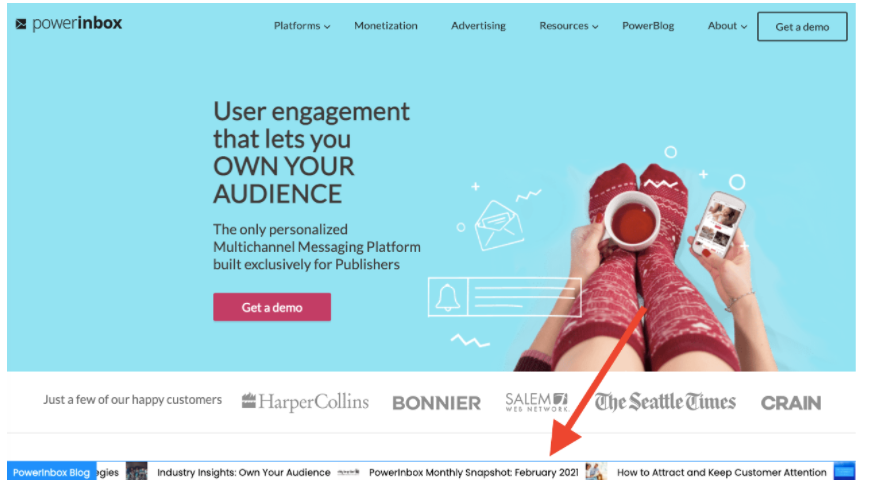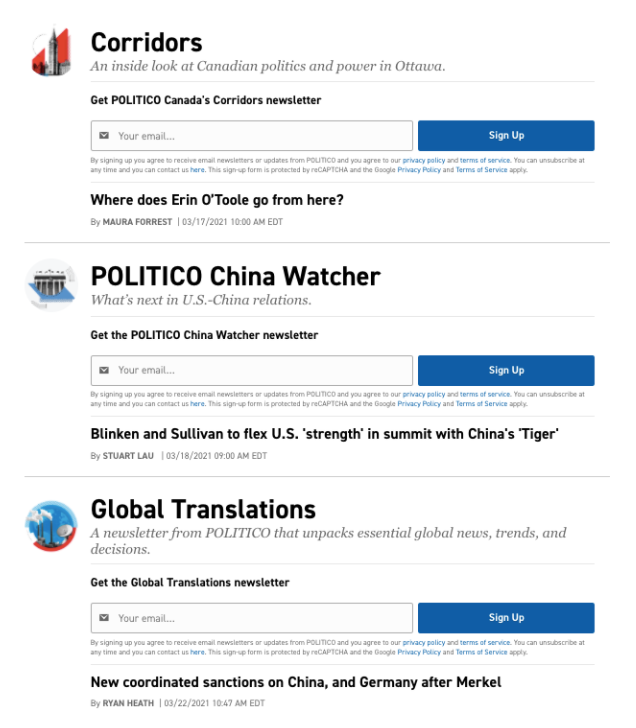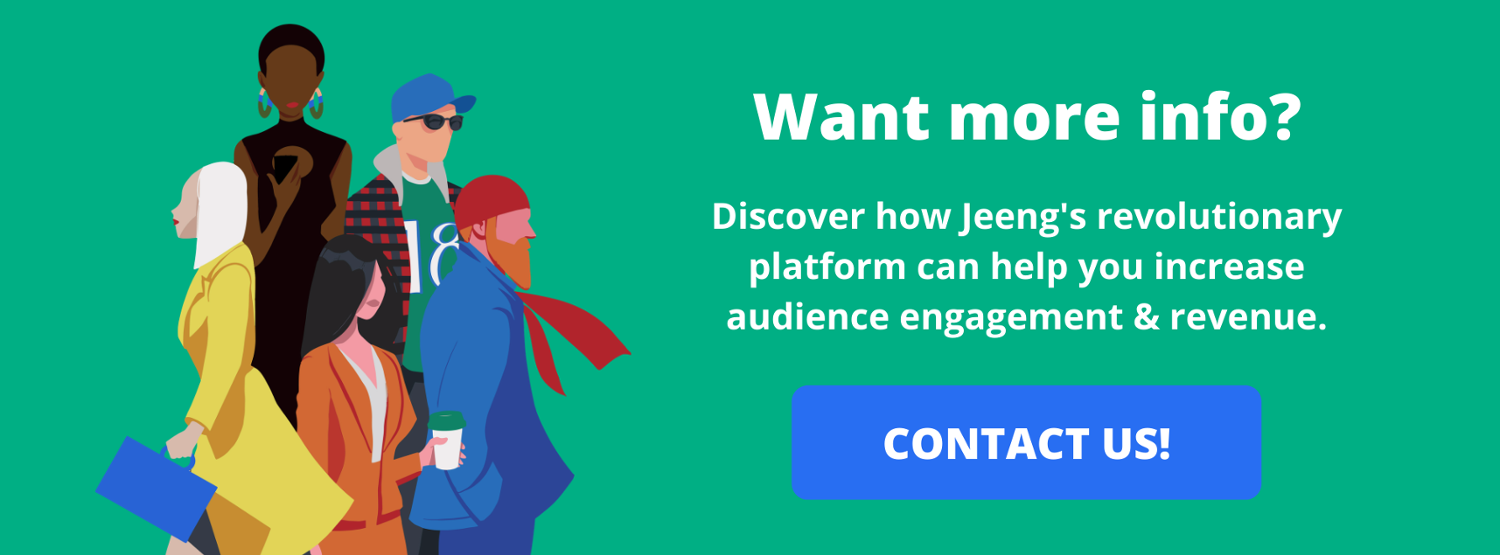If you had a retail location and you could give customers a personalized greeting every time they stepped foot inside, you would, right? Well, when you consider the fact that your homepage is the storefront of your digital operation, you can.
The key is to have the right data and strategies at your fingertips. With these tools, you can deliver a personalized homepage every time someone accesses your publication.
This kind of customized approach won’t just make audiences happy. It will also boost your engagement, conversion rates, and revenue, and inspire readers to return for more relevant content that meets their individual preferences.
Here’s what you need to know about homepage personalization — including important benefits, examples, and tactics to get started.
What is a personalized homepage?
Homepage personalization is the process of customizing the main hub of your publication according to each website visitor, such as based on their location, content interests, or subscription package.
Just as brands might customize their homepages with product recommendations, publications can customize their landing pages with personalized content, articles, videos, and updates. A very simple but effective example of this is The Weather Channel, which automatically provides relevant content based on each person’s location, often down to the city or zip code. So every time someone accesses the site, they can get the weather for their area right at the top of the homepage:

From there, visitors can go on to read national or local news stories as well as customized forecasts for their areas.
Now, to be clear, homepage personalization isn’t quite the same as website personalization. Yes, publications can customize their subscriber pages or preference centers after readers have already visited their main pages. But homepage personalization is about reaching audiences with content that meets their interests the first time or first page they visit.
Why is homepage personalization important?
Homepage personalization is important for many reasons. Naturally, personalized experiences are more likely to yield results than generic experiences that are supposed to appeal to a large swath of customers.
But we also have the numbers to back up the benefits of homepage personalization, including:
- Increased engagement: As SmarterHQ reported, 72% of consumers will only engage with content if it’s personalized.
- Growth in revenue: According to Epsilon, 80% of consumers are more likely to purchase from businesses that provide personalized experiences.
- Improved experiences and reception: Evergage reported that improved customer experiences and brand perception are two of the biggest benefits of personalization, cited by 55% and 39% of marketers, respectively.
There are also many use cases for personalizing homepages with visitor-based data, including:
Helping visitors explore new content: Netflix found that viewers spend 1.8 seconds considering which show to watch and the company only has 90 seconds to grab their attention before they move onto another activity. So they used customer behavior and location data to automatically personalize thumbnails and A/B test their performance, finding the best options for each user. They also include categories like “My List,” “Continue Watching,” “Watch It Again,” and “Because You Watched…”

Inspiring returning visitors to enjoy more of what they love: Spotify’s homepage invites returning visitors to “Jump back in” and listen to more of their favorite tunes. It also provides each user’s latest listening trends, including top artists and top tracks.

Delivering data-fueled recommendations: Amazon famously uses customer data to present personalized product recommendations on its homepage. After Amazon opened this capability to its partners and retailers, sports publisher Pulselive was able to spotlight new content, grow its subscriber list, and increase video views by 20%.
What are strategies for personalizing your homepage?
Publishers can choose from various strategies to personalize their homepage and provide visitors with relevant content. Let’s take a look at some of the most notable ones.
Ticker feeds
A new tool that’s growing in popularity is the ticker, which runs at the bottom of the homepage with content recommendations based on each reader’s interests. Just like a browser push notification, readers can click on the copy and be taken right to the promoted article, where they can learn more and continue discovering additional content.

Location-based content
Publishers can personalize their homepage content by location, using geographic data from users’ devices. A news site, for example, can automatically display different content to a reader from the US compared to a reader from the UK or Canada. A home improvement publisher can customize content for readers from urban areas vs. rural areas. Or an automotive publisher can personalize its homepage with articles or ads from nearby car dealerships and repair shops.
One of the most notable location-based publishers is Patch, which uses readers’ towns and zip codes to serve up customized feeds of local content:

On each neighborhood’s homepage, readers can also see featured events, browse a community calendar, and check out nearby real estate options.
Preference-based suggestions
Publishers can also personalize their homepages with content based on each user’s preferences. The key to this strategy is to collect first-party data about readers’ interests. If a publisher offers newsletters across different verticals, for instance, they can use that information to personalize the homepage experience each time someone logs in.
Just look at this sampling of POLITICO’s email newsletter options. A reader who subscribes to Corridors can be shown Canadian news stories on their homepage. Whereas a reader who subscribes to POLITICO China-Watcher can see newly published stories about US-China relations above the fold, increasing their engagement and meeting their clearly specified interests.

The proof is in the personalization
Personalization is critical to any publisher’s engagement strategy. But that doesn’t just mean it’s important to personalize emails, push notifications, and ad offerings. It also means it’s important to personalize customer experiences from the moment they land on your homepage — making a solid first impression and hooking readers with relevant content from the get-go.
That’s why we’re constantly innovating and launching personalized tools like the ticker. So publishers can increase engagement and revenue, and unlock unique opportunities for monetization.
Ready to take your personalization strategy to the next level? Contact us today to learn more.




